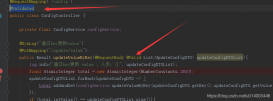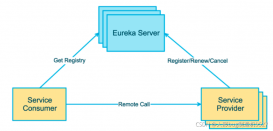单点登录概念
单点登录(Single Sign On),简称为 SSO,是目前比较流行的企业业务整合的解决方案之一。SSO的定义是在多个应用系统中,用户只需要登录一次就可以访问所有相互信任的应用系统。登录逻辑如上图
基于Spring 全家桶的实现
技术选型:
- Spring Boot
- Spring Cloud
- Spring Security oAuth2
客户端:
maven依赖
|
1
2
3
4
5
6
7
8
9
10
11
12
13
14
15
16
|
<dependency> <groupId>org.springframework.boot</groupId> <artifactId>spring-boot-starter-web</artifactId></dependency><dependency> <groupId>org.springframework.boot</groupId> <artifactId>spring-boot-starter-security</artifactId></dependency><dependency> <groupId>org.springframework.security.oauth</groupId> <artifactId>spring-security-oauth2</artifactId></dependency><dependency> <groupId>org.springframework.security</groupId> <artifactId>spring-security-jwt</artifactId></dependency> |
EnableOAuth2Sso 注解
入口类配置@@EnableOAuth2Sso
|
1
2
3
4
5
6
7
8
|
@SpringBootApplicationpublic class PigSsoClientDemoApplication { public static void main(String[] args) { SpringApplication.run(PigSsoClientDemoApplication.class, args); }} |
配置文件
|
1
2
3
4
5
6
7
8
9
10
11
12
|
security: oauth2: client: client-id: pig client-secret: pig user-authorization-uri: http://localhost:3000/oauth/authorize access-token-uri: http://localhost:3000/oauth/token scope: server resource: jwt: key-uri: http://localhost:3000/oauth/token_key sessions: never |
SSO认证服务器
认证服务器配置
|
1
2
3
4
5
6
7
8
9
10
11
12
13
14
15
16
17
18
19
20
21
22
23
24
25
26
27
28
29
30
31
32
33
34
35
36
37
38
39
40
41
42
43
44
|
@Configuration@Order(Integer.MIN_VALUE)@EnableAuthorizationServerpublic class PigAuthorizationConfig extends AuthorizationServerConfigurerAdapter { @Override public void configure(ClientDetailsServiceConfigurer clients) throws Exception { clients.inMemory() .withClient(authServerConfig.getClientId()) .secret(authServerConfig.getClientSecret()) .authorizedGrantTypes(SecurityConstants.REFRESH_TOKEN, SecurityConstants.PASSWORD,SecurityConstants.AUTHORIZATION_CODE) .scopes(authServerConfig.getScope()); } @Override public void configure(AuthorizationServerEndpointsConfigurer endpoints) { endpoints .tokenStore(new RedisTokenStore(redisConnectionFactory)) .accessTokenConverter(jwtAccessTokenConverter()) .authenticationManager(authenticationManager) .exceptionTranslator(pigWebResponseExceptionTranslator) .reuseRefreshTokens(false) .userDetailsService(userDetailsService); } @Override public void configure(AuthorizationServerSecurityConfigurer security) throws Exception { security .allowFormAuthenticationForClients() .tokenKeyAccess("isAuthenticated()") .checkTokenAccess("permitAll()"); } @Bean public PasswordEncoder passwordEncoder() { return new BCryptPasswordEncoder(); } @Bean public JwtAccessTokenConverter jwtAccessTokenConverter() { JwtAccessTokenConverter jwtAccessTokenConverter = new JwtAccessTokenConverter(); jwtAccessTokenConverter.setSigningKey(CommonConstant.SIGN_KEY); return jwtAccessTokenConverter; }} |
以上就是本文的全部内容,希望对大家的学习有所帮助,也希望大家多多支持服务器之家。
原文链接:https://juejin.im/post/5a6e771e5188253dc3323b6b















